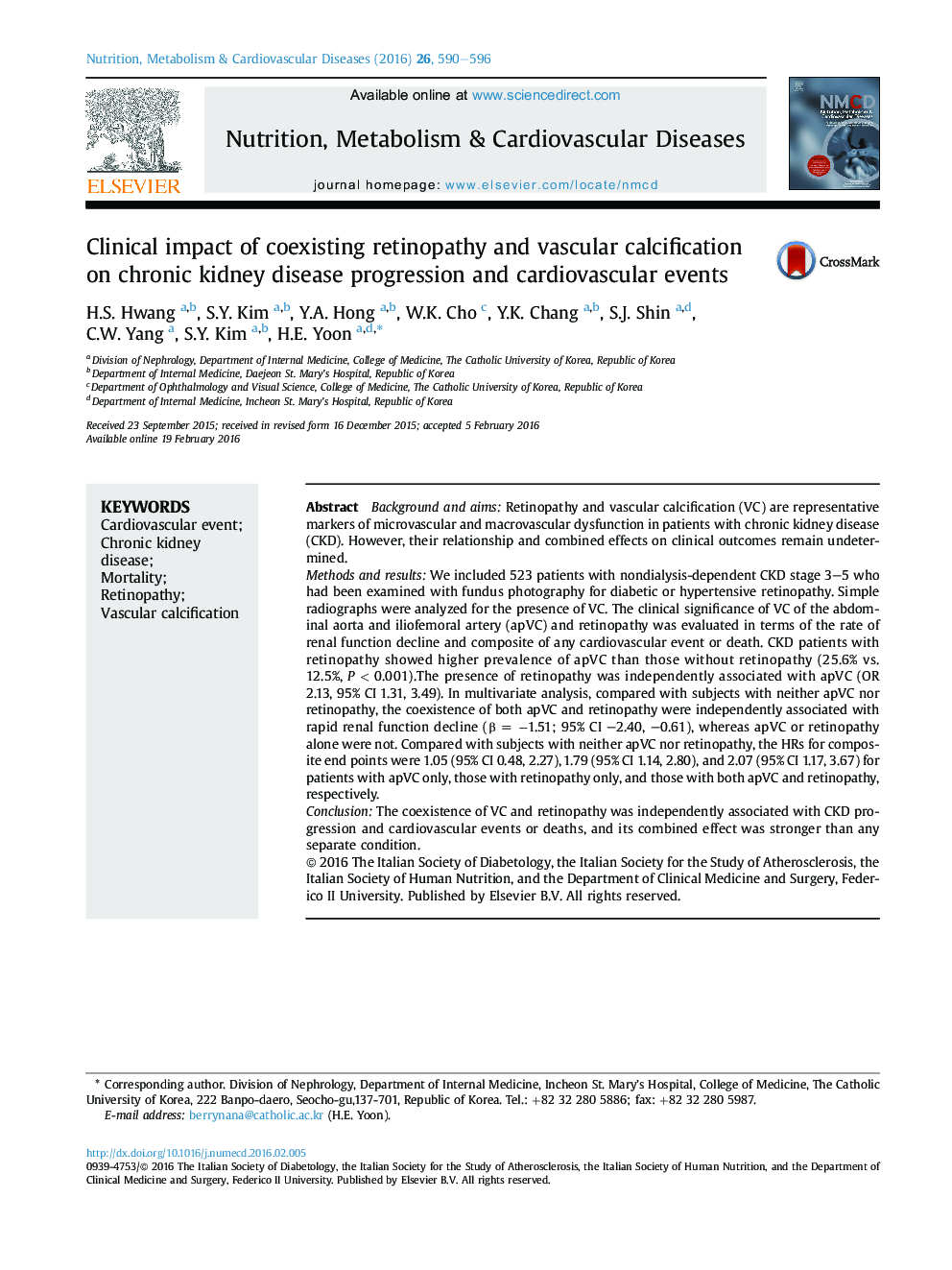| Article ID | Journal | Published Year | Pages | File Type |
|---|---|---|---|---|
| 3001759 | Nutrition, Metabolism and Cardiovascular Diseases | 2016 | 7 Pages |
•Retinopathy was independently associated with vascular calcification (VC) in chronic kidney disease (CKD) patients.•The coexistence of VC and retinopathy was independently associated with CKD progression.•The coexistence of VC and retinopathy strongly predicted cardiovascular events.
Background and aimsRetinopathy and vascular calcification (VC) are representative markers of microvascular and macrovascular dysfunction in patients with chronic kidney disease (CKD). However, their relationship and combined effects on clinical outcomes remain undetermined.Methods and resultsWe included 523 patients with nondialysis-dependent CKD stage 3–5 who had been examined with fundus photography for diabetic or hypertensive retinopathy. Simple radiographs were analyzed for the presence of VC. The clinical significance of VC of the abdominal aorta and iliofemoral artery (apVC) and retinopathy was evaluated in terms of the rate of renal function decline and composite of any cardiovascular event or death. CKD patients with retinopathy showed higher prevalence of apVC than those without retinopathy (25.6% vs. 12.5%, P < 0.001).The presence of retinopathy was independently associated with apVC (OR 2.13, 95% CI 1.31, 3.49). In multivariate analysis, compared with subjects with neither apVC nor retinopathy, the coexistence of both apVC and retinopathy were independently associated with rapid renal function decline (β = −1.51; 95% CI –2.40, –0.61), whereas apVC or retinopathy alone were not. Compared with subjects with neither apVC nor retinopathy, the HRs for composite end points were 1.05 (95% CI 0.48, 2.27), 1.79 (95% CI 1.14, 2.80), and 2.07 (95% CI 1.17, 3.67) for patients with apVC only, those with retinopathy only, and those with both apVC and retinopathy, respectively.ConclusionThe coexistence of VC and retinopathy was independently associated with CKD progression and cardiovascular events or deaths, and its combined effect was stronger than any separate condition.
